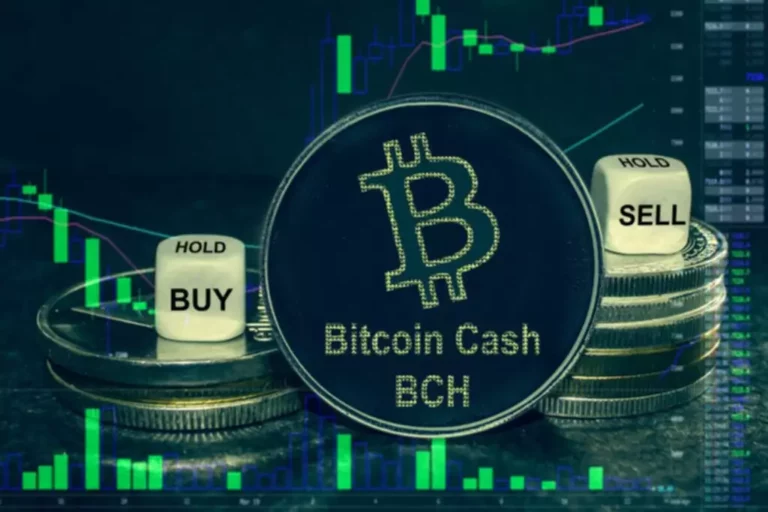Technical Evaluation Vs Basic Evaluation Big Apple Institute Of Finance
The consequence of the evaluation can result in buying, holding, or selling a safety. Fibonacci retracement levels are horizontal traces that symbolize possible support and resistance levels based mostly on the Fibonacci sequence. Traders use these ranges to pinpoint potential value reversal points following a large market motion.
Fundamental analysis is a technique used to evaluate an asset’s intrinsic worth, similar to a inventory, bond or cryptocurrency, by looking at a selection of qualitative, quantitative and financial factors. The objective is to find out whether or not the asset is overvalued, undervalued or appropriately priced available within the market by evaluating the underlying health and efficiency of the asset. However, for long run investors, it’s essential to have an idea of the worth of a company.
Elementary Vs Technical Evaluation: Key Variations
Fundamental analysts are involved with the difference between a stock’s worth, and the worth at which it’s trading. Otherwise, it’s time to see how one of the best platform for swing buying and selling can simplify your method to stock analysis and empower you to win more trades with much less work. While mastering each elementary analysis vs technical analysis individually offers a robust foundation, wouldn’t it’s revolutionary to have a device that seamlessly integrates the two?
- Investors incessantly combine the rules of elementary and technical analyses to make extra informed funding choices.
- For instance, let’s say you’re an investor who focuses on sustainable development.
- Each investor should evaluate their capacity to speculate for a long run, especially during periods of downturns in the market.
- The debate between the importance of elementary and technical analyses in investment decision-making is long-standing and nuanced.
Asset allocation choices can then be made to scale back the potential downside of a portfolio. The greatest profits are usually made by the traders which might be right when the remainder of the market is wrong. Also, decisions based mostly on elementary analysis usually have a better likelihood of being correct, particularly over the long run. Fundamental analysis is the examination of trade tendencies, monetary data, and financial outlook. On the other hand, the technical evaluation examines worth movements and market psychology. While technical analysis helps buyers identify tendencies that could be replicable, it’s far from foolproof.
Buying And Selling Mindset: The Method To Cease Revenge Buying And Selling
Technical evaluation acts as a sensible guide within the quick-moving and turbulent crypto market, allowing merchants to make well-informed, fact-based trading decisions. One of the major advantages of technical evaluation is that shares may be analyzed quickly. This means a technical analyst can cover extra shares and draw ideas from a bigger universe. Technical analysis may also be used to determine value targets, and ranges at which an concept is obviously wrong. This allows traders to create funding methods with clearly outlined danger and reward profiles. Portfolio danger could be managed by calculating the premium to fair value at which shares are buying and selling.
Digital belongings are vulnerable to sharp worth fluctuations driven by information stories and market sentiment, frequently resulting in unpredictable pricing patterns. It provides a structured strategy to comprehending the psychology and attitude of the market, helping traders to foresee price adjustments and cut back dangers. Technical evaluation also enables traders to create explicit threat management strategies and place stop-loss orders.
Technical evaluation and basic evaluation are two main colleges of thought in relation to analyzing the monetary markets. Technical evaluation looks at the value motion of a safety and uses this information to try to foretell future price movements. Fundamental evaluation as a substitute looks at economic and monetary components that influence a enterprise. Let us take a deeper dive into the primary points of how these two approaches differ, the criticism in opposition to technical evaluation, and how technical and fundamental analyses can be used collectively. Technical analysis provides technical merchants the tools to successfully traverse the complicated world of digital belongings.
Ultimately, a good value is arrived at after evaluating several fashions and ratios. The debate over the relative deserves of fundamental and technical evaluation is a contentious one. Investors and merchants alike typically miss out after they decide one over the opposite. Fundamental and technical evaluation are just two instruments you can use to navigate it. The truth is that it’s not a matter of one being inherently superior to the opposite. Instead, it boils down to your particular person strategy, objectives, and threat tolerance.
For example, worth buyers often assume that the market is mispricing a security over the quick time period, but additionally assume that the worth of the inventory will correct itself over the long run. This “long run” can symbolize a time-frame so long as a quantity of years in some cases. Technical analysts typically imagine that there’s no reason to investigate a company’s monetary statements since the inventory worth already includes all relevant info. Instead, the investor focuses on analyzing the inventory chart itself for hints about the place the price could additionally be headed.
Introduction To Growth Investing
In investing, elementary and technical analyses function crucial tools for these in the market. Fundamental evaluation focuses on monetary statements and economic indicators to assess an asset’s intrinsic worth, making it more appropriate for long-term funding choices. Alternatively, technical evaluation examines share value actions and tendencies to determine investment opportunities.
You open a position with a margin, which is a fraction of the whole trade dimension – and are therefore at the whim of huge swings. This technical assessment, focused on market sentiment, helps give an investor an concept a couple of market’s willpower of the value of an asset. They will be able to use this to know whether or not their very own valuation of the asset is appropriate or not. For instance, the tech sector typically trades at larger P/E ratios on the premise that it is more progressive than other sectors. A dealer who invests on the premise of fundamentals might miss out on higher returns by making use of this strategy to that sector.

Investors might have a glance at the amount of trading that an asset receives to judge how the inventory may transfer sooner or later. The trader may also take a look at candlesticks for the power commodity and evaluate them with related patterns in the past to determine an expected future movement. There are a number of methods to carry out a technical analysis differentiate between fundamental and technical forecasting utilizing candlesticks, but all of them typically focus on the sample that the candlesticks make over a given time interval. If it’s overvalued, they might promote it or anticipate a chance when the asset’s actual worth drops. By specializing in the former, elementary merchants seek to understand what could be seen as the true value of an asset.
You should think about whether you understand how this product works, and whether or not you possibly can afford to take the excessive danger of shedding your cash. By pre-empting a worth movement based mostly on previous trends, the dealer could possibly discover one of the best entry or exit point for the commerce. Technical analysis makes use of a variety of methods to determine worth, corresponding to shifting averages, Fibonacci retracements and Bollinger bands. There isn’t any assure that either of those funding approaches will work beneath all market situations. Stocks fluctuate in value due to a wide selection of threat factors, including altering financial, political, or market conditions, or in response to occasions that affect specific industries or corporations.
Since the data collection length is brief, this method is usually better for active merchants looking for short-term returns. For a long time, the preferred and most credible methodology of evaluating shares was basic analysis. As expertise continues to advance and extra data is broadly obtainable, this is altering. That means most investments first use black-box trading or pc modeling to discover out one of the best investments. Most of the biggest companies make funding choices utilizing pc algorithms that use a mix of technical and basic components.
Tips On How To Trade Using Funamental And Technical Analysis With Us
All chartists use worth charts – normally either line charts, bar charts or candlestick charts. Some analysts use indicators like shifting averages and oscillators calculated from stock prices. Others use value patterns, and complicated evaluation frameworks like Elliott Waves and Market Profile. Trend followers use other tools to establish value trends and measure momentum. If a inventory does properly, based on the expectations set by your analysis, then you definitely stand to gain.

Fundamental analysts examine a cryptocurrency’s tokenomics, including its total provide, circulation and utility inside the project’s ecosystem. They evaluate elements that may have an effect on the token’s long-term value, similar to shortage and the token’s role in transactions and governance. First amongst these is that whereas some technical approaches can be again examined, many can not. Pattern buying and selling, Elliott Wave evaluation and other forms of technical analysis are subjective and depend on judgement. Fundamental evaluation delves deep into the intrinsic value of an organization, making it invaluable for long-term traders looking for to comprehend the health and potential of a enterprise. The time-consuming means of diving into financial statements or deciphering advanced chart patterns is dramatically streamlined.
When evaluating share value, technicians usually use total development, areas of resistance and assist on the charts, and price momentum. In the context of cryptocurrency buying and selling, technical analysis involves assessing previous value data and market statistics to project future worth modifications. Technical evaluation makes predictions about market conduct using patterns, tendencies and statistical indicators, in distinction to elementary evaluation, which concentrates on an asset’s underlying worth.
We need to clarify that IG International does not have an official Line account presently. We have not established any official presence on Line messaging platform. Therefore, any accounts claiming to represent https://www.xcritical.in/ IG International on Line are unauthorized and must be thought of as pretend.
Fundamental vs. technical stock market analysis: Which one is right for busy doctors? – Kevin MD
Fundamental vs. technical stock market analysis: Which one is right for busy doctors?.
Posted: Fri, 10 Nov 2023 08:00:00 GMT [source]
Note that info from this evaluation of price is used for predicting what the longer term value of the share might be. Technical analysis evaluates financial assets, similar to stocks, currencies, or commodities, by reviewing the historical worth and quantity information. Unlike elementary evaluation, which focuses on the intrinsic value of an asset, technical analysis examines the amount and worth of shares over time. Did you realize that early signs of technical evaluation appeared long ago in Dutch monetary markets in the seventeenth century? Analysts forecast future inventory market costs utilizing numerous previous share performance statistics.
The value at which the customer and seller of the share, decides to settle the deal, is one such value which combines, weighs and expresses all the elements, and is the only worth which matters. In other words, technical evaluation gives you a transparent and complete view of the rationale for modifications in costs of a security. It is predicated on the premise that the price of share move in trends, i.e. upward or downward, relying upon the attitude, psychology and emotion of the traders. Technical analysis and basic evaluation typically have totally different objectives in mind. A good approach to conceptualize the difference is to match it to someone shopping for a home to flip versus somebody who’s shopping for a home to reside in for several years. The super volatility current in cryptocurrency markets presents a challenge for technical analysts.
Alternatively, technical evaluation supplies a fast, visual method to consider assets, and it has limits. Traders and traders usually used technical evaluation with different methods for a more complete strategy. The worthiness of fundamental evaluation hinges on the investor’s chosen approach. Most merchants often combine each strategies to obtain a comprehensive view of the crypto market.



